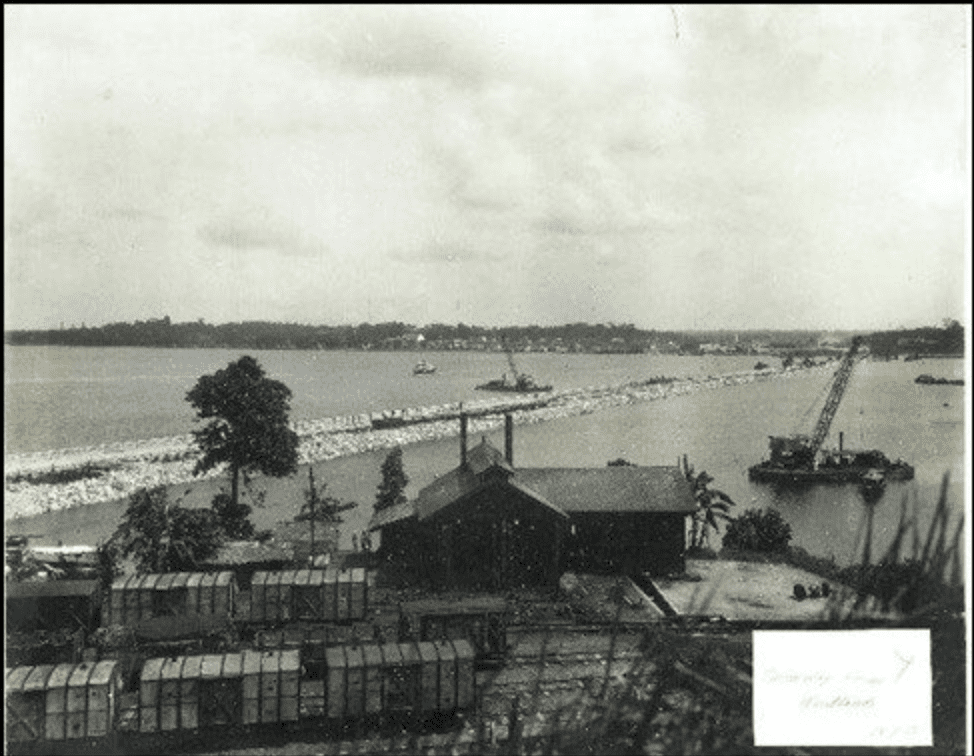The Tambak Johor Bridge is the first land route connecting Malaysia and Singapore. This 1056-meter-long road spans the Johor Strait, linking Johor Bahru to Woodlands, a southern city in Singapore. Its significance is paramount to both nations.
But what is the story behind the Tambak Johor Bridge?
In the 19th century, Singapore underwent a transformation into a major international port. In this context, there was an urgent need to connect Peninsular Malaysia and Singapore, primarily for the facilitation of trade. At the time, ferries were the primary means of transportation.
However, due to the pressing need, the initial proposal to build a bridge between Singapore and Johor Bahru had to be abandoned due to changes in the sea’s depth, ranging from 14 to 21 meters, making bridge construction unfeasible. Eventually, they opted to construct a causeway using granite stone. Construction of the causeway began at the end of 1919, utilizing around 1.15 million cubic meters of granite stone extracted from the Bukit Timah and Pulau Ubin areas.

In September/October 1923, a section of the railway connecting the two major cities was opened, even though construction was not yet complete. This railway was used for the transportation of goods and passengers between Temasek (Singapore) and Peninsular Malaysia at that time.
The original Tambak Johor, which was 1056 meters long and 18 meters wide, was inaugurated on June 28, 1924. The inauguration ceremony was attended by officials from the State of Peninsular Malaysia and British government officials at the time. (The inauguration had to be postponed from its original date of October 5, 1923, due to the ill health of the British High Commissioner, Sir Laurence Guillemard, at that time.)

In 1926, a fresh water pipe system that supplied water from Johor to Singapore was completed.
During World War II, the British carried out bombings on a portion of the Tambak Johor to prevent the Japanese army from entering Singapore. After the fall of Singapore, the Japanese army repaired the Tambak Johor.
Since then, the Tambak Johor has continued to be a crucial land transportation link for both nations, despite the well-known congestion in the area. Perhaps the proximity to the central areas of both countries is a contributing factor.
Despite experiencing a lull for two years due to the Covid-19 pandemic, Tambak Johor is once again bustling with users from both countries. While there have been some controversies regarding the Bendy Bridge, the Tambak Johor is expected to continue in use and may well be a part of ongoing history for another 100 years.




 SG
SG Malaysia
Malaysia Indonesia
Indonesia
Recent Comments